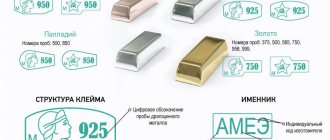Jewelry products have their own specifics in the field of mandatory labeling . to such a product , and applying an identification code directly to the product requires special equipment.
In an article prepared by klerk.ru, experts will talk about which jewelry items are subject to mandatory labeling , what equipment will be needed when working with this group of goods , and what deadline market participants need to prepare for.
Dates for introducing jewelry labeling
The government planned to make labeling of jewelry mandatory 2021 . It was assumed that from January 1 there would be a ban on the import and production of jewelry without the possibility of identification. And they wanted to ban the sale of unlabeled products from July 1. However, representatives of small businesses did not have time to prepare and the deadline was changed.
On March 1, 2021, marking of jewelry was launched . Companies could take part in the experiment voluntarily. It was enough to register in the GIIS DMDK and register for special registration with the Federal Assay Office (https://probpalata.ru/specialAccounting).
On April 1 , 2021, market participants were allowed to try out technological solutions for applying identifying marks directly to products .
From March 1, 2022, labeling of jewelry will become mandatory and will take place in the planned two stages. The presence of DataMatrix code will become mandatory for imports and manufacturers. Participants in the turnover will enter all transactions carried out with jewelry into the GIIS DMDK system, namely:
- put products into circulation;
- transfer ownership rights;
- send and move goods to warehouses or points of sale;
- remove products from circulation after sale to the final consumer.
From March 1, 2023, the import and sale of jewelry without a physical mark will be prohibited, but storing unmarked products in a warehouse will be permissible.
From March 1, 2024, it will be prohibited to sell and store jewelry without identification marks.
What information does the jewelry insert tag contain?
According to the domestic standard “Jewelry inserts. Information Disclosure Rules" STO 52818945-1-2016, developed by the Association "Guild of Jewelers of Russia", a certain classification of jewelry gems is used on the tags.
In the same set of rules there is a decoding of the definition of what refers to a jewelry insert - this is any cut stone made from natural or artificial materials, intended for use in jewelry. Uncut crystals only qualify as inlays if they are actually set into the jewelry.
Disclosure of information falls on the shoulders of sellers. The goal is to fully inform the buyer about the authenticity and origin of the insert. “Transfer” of information to the end consumer occurs in two ways: in writing in commercial documentation or on product labels.
According to the rules, the following information about inserts on the jewelry tag must be indicated:
- insert name;
- information about the type of refining of precious gems: the method of processing that influenced the physical and chemical properties of the stone;
- classification characteristics of a specific type of stone;
- information about the origin of the artificial insert;
- weight and number of stones in the decoration.
At the same time, the weight of natural gems is indicated in carats; the refining method has an abbreviation that is accepted throughout the world. And for artificial stones, only the name and color are allowed to be indicated (indication of the processing method is not necessary).
Marking of the type of processing of natural gems
Wondering how to correctly read a jewelry tag with a natural gemstone? Pay attention to the type of processing. It must be indicated for real gems. When there is no letter designation, you have an artificial insertion option.
Among the common and generally accepted methods of refining are:
- Trade code “B” indicates refinement by bleaching. This is the change or removal of natural shade using chemicals or physical processes, including targeted exposure to light rays.
- Coding "D" - coloring. A method of beautification for the purpose of changing color by applying paint or dyes to or within the stone. This method also includes changing the tone using the “sugar/acid” process.
- The letter "F" indicates the crack filling process. They are “filled” with a special substance or glass, resin, or plastic to obtain a smooth gem without defects, strengthening its structure.
- The designation “H” indicates heat treatment using heating in a special oven or other methods.
- The combination of the letters “HPHT” indicates the processing of the stone under high temperatures and pressure in order to change the shade of the stone.
- Trade code “I” refers to the impregnation of the gem with oil, wax, resin, polymers or plastic. The goal is to discolor the stone to replace its tone with a different one.
- The letter “L” stands for laser drilling. This is laser burning of a channel between the surface of the diamond and a dark inclusion in order to eliminate this defect or replace it with another less noticeable color.
- The Latin "O" indicates oiling, which is necessary to reduce the visibility of cracks.
- The “R” code indicates artificial irradiation to change the color of the gem.
- Trade code “U” is a variant of enhancement using diffusion to change color by heating the gem in a chemical environment.
- The Latin "W" indicates waxing - the application of colorless wax or other similar material to the surface of the stone or near-surface layer.
For example, the decoding of a diamond jewelry tag, which looks like this: “Diamond treated (HTHP) Kr 57A 3/3-1-0.25 carats,” says that the stone has undergone heat treatment and refinement using high pressure. The weight of the stone is 0.25 carats. And the numbers 3/3 indicate transparency (purity of color). Kr 57 - the number of faces in a round gem.
With the introduction of digital jewelry tagging in 2021, the tag will be much easier to read. Smartphones, using applications, will tell you everything about the place of extraction and the type of processing of the gem. They will also tell you where to buy a laser machine for marking gold and whether the sample on the metal corresponds to the real amount of gold or silver in the alloy.
How does jewelry labeling work in 2021?
With the help of mandatory labeling, you can track the entire path of products from the manufacturer to the end consumer. A special identification code allows you to obtain information about the movement of jewelry goods in several stages.
For jewelry, marking code is provided not by the Center for the Development of Advanced Technologies, but by Goznak. Accordingly, participants in turnover use the GIIS DMDK system (https://dmdk.ru/) instead of “ Honest ZNAK ”.
The procedure for working with marked goods is as follows:
- suppliers and importers order markings from Goznak;
- the provided identification codes are applied to jewelry and special tags;
- participants in turnover register warehouse movements and transfer of property rights in the GIIS DMDK ;
- When selling to the final buyer, the seller scans the code at the checkout. After this operation, the product and identification code go out of circulation.
These measures will eliminate the sale of counterfeit and low-quality goods and fair among entrepreneurs .
Appearance of the tag
The tag is made of thick paper or thin cardboard. It is attached to the jewelry using thread or fishing line, secured with a miniature seal and clamped with a special tool - a sealer. Most often, standard aluminum seals are used, but some companies produce their own - colored, with a logo. It happens that it is impossible to attach a passport to jewelry - for example, if it is a half-open ring. In this case, the document is placed in the packaging along with the product.
The passport must have a hole for the thread to pass through. The cutting is done not by hand, but by printing. Sometimes the hole is reinforced with a metal or plastic ring to prevent it from tearing during transportation or storage.
The information on the tag is filled out in typographic font. The data must be indicated legibly, without marks or corrections. It is allowed to fill in the details manually using a black or blue ballpoint pen.
Which jewelry items are subject to labeling?
Gold , precious stones should be marked , namely:
- gold and platinum jewelry ;
- gold coins ;
- cut and rough diamonds;
- diamonds, sapphires, emeralds and rubies;
- platinum and palladium powder.
Silver and silver goods , as well as products whose weight does not exceed three grams, are exempt from mandatory marking
Gemstone indices
According to the rules, each stone must have its own index, which is indicated on the tag. The table below shows a list with symbols.
| Index number | Name of the stone |
| 01 | Diamond edge |
| 02 | cubic zirconia |
| 03 | Diamond |
| 10 | Amethyst |
| 20 | Ruby |
| 30 | Pomegranate |
| 40 | Emerald |
| 50 | Sapphire |
Most stones are not described in detail. As a rule, detailed information is indicated on tags with diamonds and emeralds, since they are considered the most expensive. Moreover, in every store the buyer of such jewelry is required to issue a passport for it. But it’s not enough just to receive a document; you also need to understand what all the abbreviations it contains mean.
We recommend reading: How to effectively clean gold at home
| Organ name | Designation | Processing quality | Meaning |
| Round | Kr | Excellent | E (Excellent) |
| Pear | G | Very good | VG (Very Good) |
| Square | Kv | good | G (Good) |
| Marquis | M | Average | F (Fair) |
| Emerald | AND | Below the average | P (Poor) |
| Baguette | Bt | ||
| Princess | P | ||
| Triangle | T |
It is noteworthy that in Russia it is customary to mark a cut group with Russian capital letters “A”, “B”, “V”, where “A” is the highest grade. Diamonds have such a parameter as the purity of the stone, which in the Russian market is usually designated by numbers. The rating scale starts from 1 (this is considered the purest mineral) and goes up to 12. Particular attention is paid to color, with a numerical range from 1 to 4 for small specimens and a numerical range from 1 to 17 for large minerals (in both cases, the lower the number, the purer the diamond). But with emeralds it’s a little different because of the shade: if the number is 1, it means the color is dark.
To make it clear how to read the marking, we suggest looking at this option: 3 Kr 15-0, 03-1 ½ A. The explanation is as follows: the product contains three round diamonds with 15 facets, each weighing 0.3 carats . The gemstones are pure in color with minimal inclusions and cut to the highest quality.
What is GIIS DMDK and how does it work
GIIS DMDK is a state information system (GIS) that controls the circulation of precious metals and precious stones and jewelry . Participants in this market interact in GIS with each other and with government regulatory authorities.
GIIS DMDK contains information about jewelry , their description and identification codes. If necessary, the system can generate a statistical or reference report or obtain a reconciliation report upon request.
To interact, you need to register in your personal account at GIIS DMDK . rule and user manual can be viewed on the official website of the system in the “How to connect” section (https://dmdk.ru/connect/).
Reporting to GIIS DMDK
Jewelry labeling will affect all market participants.
Information is transmitted to the system:
- Central Bank of Russia.
- Credit organizations that sell precious metal bars.
- Manufacturers and importers of jewelry.
- Enterprises engaged in refining.
- Trading houses that work with jewelry.
- Jewelry stores.
- Pawnshops, thrift stores and consignment shops.
- Online stores selling jewelry.
What you need to work with jewelry labeling in 2021
The process of preparing work with marking consists of several steps:
- Purchase of an electronic digital signature ( EDS) with an enhanced qualified security key certificate.
- Ordering and receiving a certificate of no debt from the tax service.
- Registration of a personal account on the GIIS DMDK website.
- Preparing the necessary equipment:
- cash registers with software adapted for labeling ;
- scanners for reading marking codes;
- printer for printing labels.
- Joining the Association of Automatic Identification UNISKAN/GS1 RUS.
- Conclusion of an agreement with Goznak for the provision of DataMatrix codes.
Labeling work at different stages of circulation
Participants in the jewelry and precious metals market perform various actions with markings characteristic of the type of activity of the enterprise.
Let's take a closer look at each of them.
Mining companies:
- form production batches;
- send a request to Goznak, receive codes and label each package;
- labeled raw materials are shipped.
Raw materials are shipped to refineries , enterprises with which a toll agreement has been concluded, or to product . In the latter case, property rights are transferred.
Manufacturers:
- receive finished raw materials;
- create blanks for the production of jewelry ;
- send them to the Federal Assay Office (FAP) to identify compliance;
- produce jewelry ;
- send finished goods to the FPP for approval;
- order markings and apply them to labels.
When registering a product in GIIS DMDK, they provide information about the batch of raw materials from which the product .
Jewelry processors and manufacturers :
- receive the marked goods;
- manufacture products in compliance with requirements;
- send it to identify correspondence in the FPP;
- order labeling for each unit of goods;
- place markings on tags and packages.
Refineries : _
- purify precious metal from impurities;
- The received products are sent to the owner.
The owner confirms the fact of practical receipt in the GIIS DMDK.
Wholesale customers:
- register the fact of receipt of products ;
- distribute goods to retail outlets.
Retail Stores:
- accept finished labeled products into the jewelry store;
- record the transfer of ownership rights in the GIS;
- remove the product from circulation by scanning the markings at the checkout when selling to the end consumer.
The online cash register sends information about the sale to the fiscal data operator. From there, the data is transferred to the information system for accounting for precious metals and stones .
Pawnshops
Submit an application to receive DataMatrix codes and, upon receipt, mark the products .
How to mark jewelry
Two hallmarks are applied to jewelry The first is fineness, which means the amount of base noble metal content. The second is a print with encoded information about the manufacturer, the date of manufacture of the product and the territorial inspection to which the manufacturer belongs.
On March 1 , 2022, jewelry products will be marked with an additional tag with a Data Matrix code and identification number.
And from March 1, 2023, the Data Matrix code will look like a nanotag. The new imprint will be placed on each individual piece and precious insert of the jewelry and will not be visible to the buyer. The size of such a mark will be 0.8 mm2. Entrepreneurs are freed from purchasing expensive equipment. Responsibility for applying nanoengraving rests with the FPP. The department will put marks on jewelry along with the hallmark.
What is needed for putting into circulation and subsequent sale
Tag
All jewelry products manufactured in Russia or imported into the country will go into circulation with an additional attached tag from March 1, 2022.
It presents:
- A unique identification number that is generated by GIIS DMDK using special software.
- Barcode generated based on the UIN.
- The website address where there is all the information about a specific piece of jewelry.
Photo
Each piece of jewelry must also have a digital photograph, which the manufacturer provides along with other information to a unified information platform for interaction between participants in the market of precious metals and precious stones, which makes it possible to obtain a UIN.
Deadlines for marking leftover jewelry
Precious metals market participants will carry out operations to mark the remaining jewelry as follows:
- Until January 15, 2022, the balances of jewelry products as of January 1, 2022 will be entered into
- By April 1 , 2022, they will conduct an inventory count and update information on balances as of March 31, 21.
- By September 1, 2022, label all declared balances.
From March 1, 2023, the sale of jewelry without nanomarks will be prohibited. And with
On March 1, 2024, the remainder without appropriate marking will be prohibited from being stored in warehouses.











